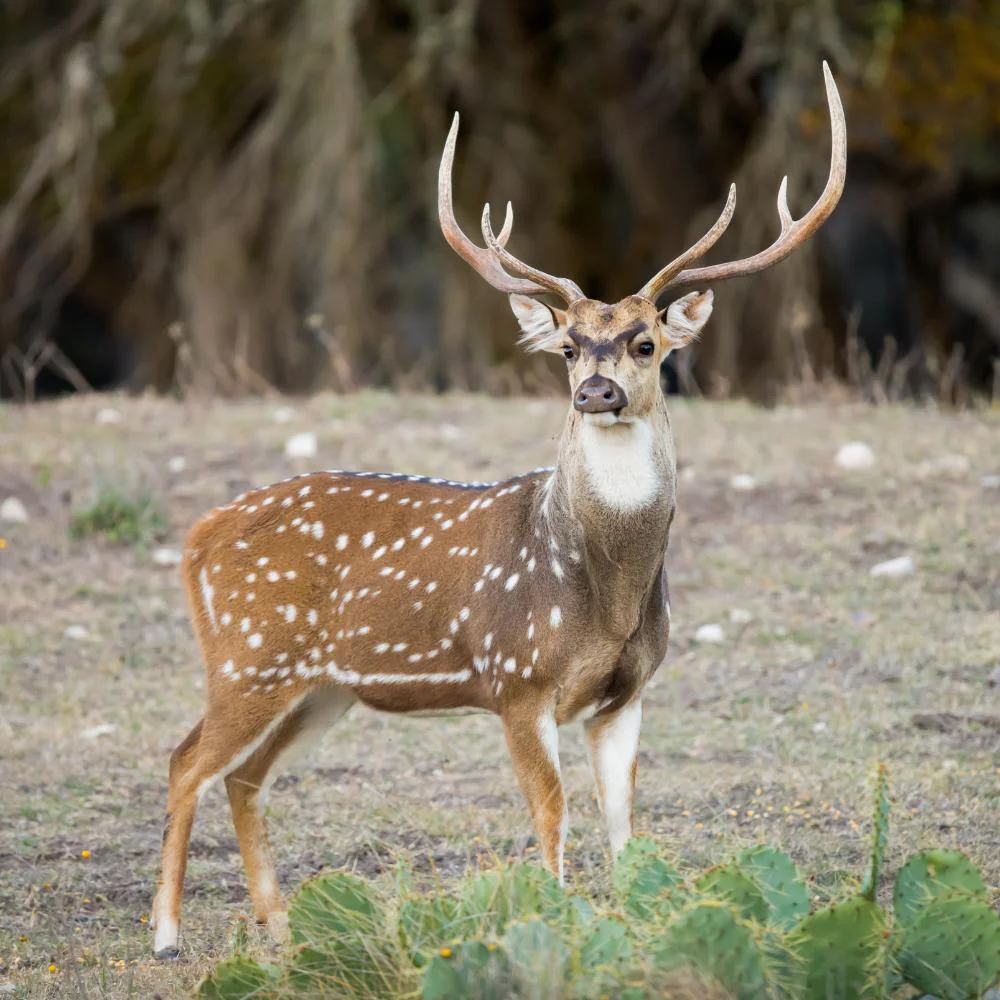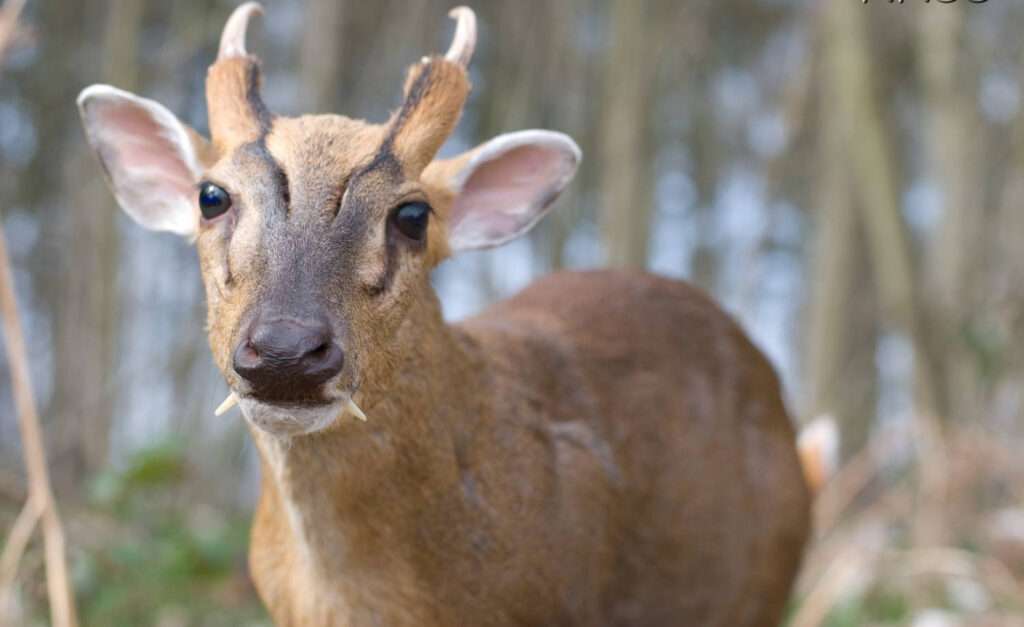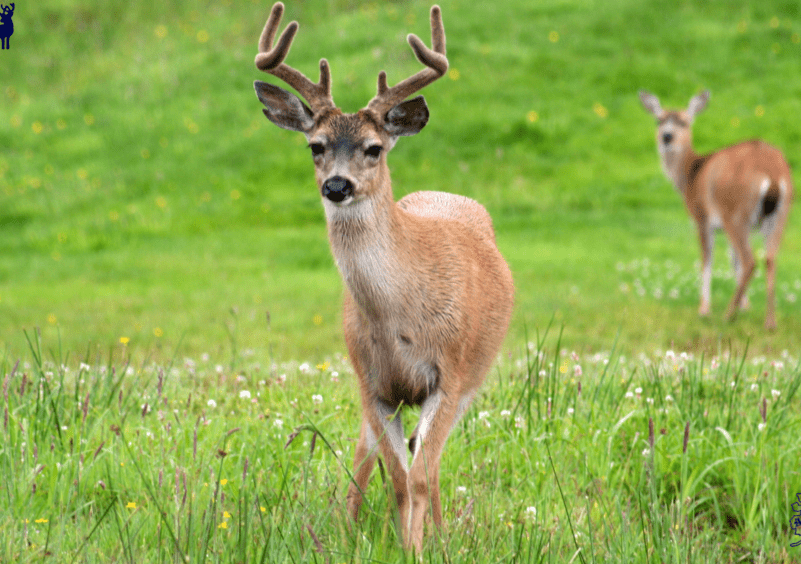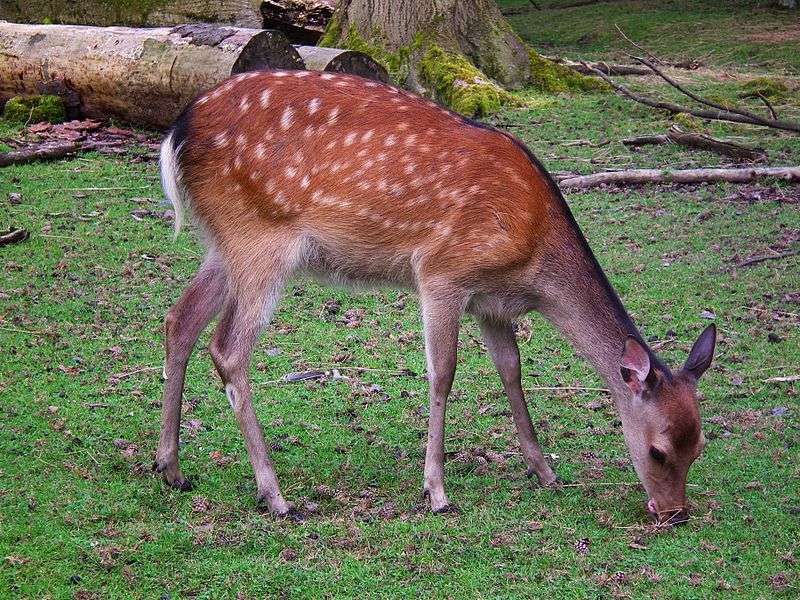
Description
Scientific Name: Axis axis
Lifespan: 9 to 13 years
Beautiful Axis deer have a spotted body and a short tail. Both sexes have white patterns on their bodies, which are arranged in rows down the length of each individual. The Axis deer’s head is a little paler variation of the same colour as its body, which is a brilliant golden brown. They have lighter-colored fur stripes around their eyes. Males have three times on each of their majestic antlers and black markings on their faces. These deer have a long, dark stripe on their back that is surrounded by a line of dots. While the undersides of their legs can be either white or creamy, the outer portions of their legs are light brown. The throat of the Axis deer has a white patch, which is more pronounced in males. The Axis deer also has a white underside to its tail.
Habitat
In India’s forests, the Axis deer population is primarily found. Despite being introduced to the USA and Australia, Sri Lanka and India account for the majority of their distribution. They favour wide grasslands, savannas, and plantations, but they may thrive in forested valleys and deep forests.

Behavior
The axis deer are very gregarious creatures. Six to thirty people can make up one of their herds, with two or three stags present. Matriarchal herds are often composed of adult females, their fawns from the most recent, and preceding years. The male social structure, however, is hierarchical, with larger, older men dominating smaller, younger males. The Axis deer are constantly vigilant in case a predator should suddenly approach. The early and late afternoon are when these creatures are most active. The Axis deer typically relax in the shade during the heat of the day. They prefer to stay close to water in hot weather and drink in the mornings and nights. Axis deer are noisy creatures who yell and bark in danger. Males sometimes groan while relaxing or making aggressive displays. The majority of females and young animals bark repeatedly when startled or when they come upon a predator. Fawns frequently shriek as they look for their mother.
Keeping as a Pet/In Captivity
Herbivores (graminivores, folivores) are axis deer. As a result, in captivity, they typically eat grasses, flowers, and fruits that have fallen from trees. The primary food source for these animals during the monsoon season is grasses and sedges. Additionally, they like mushrooms that are nutrient- and protein-rich. The Axis deer can also browse when necessary.
Preferred Habitat: Scrubland, grassland, and sparse woods
Table





